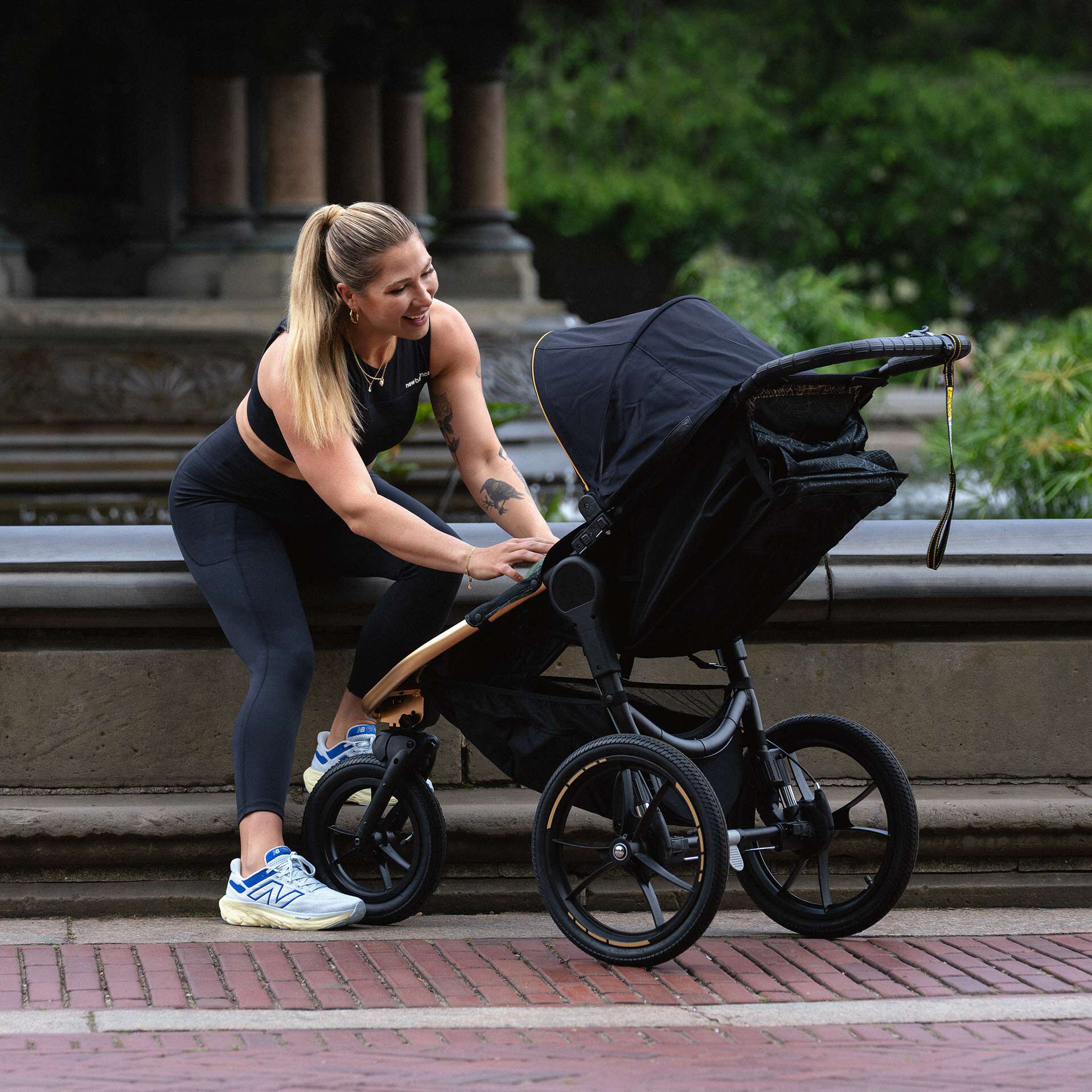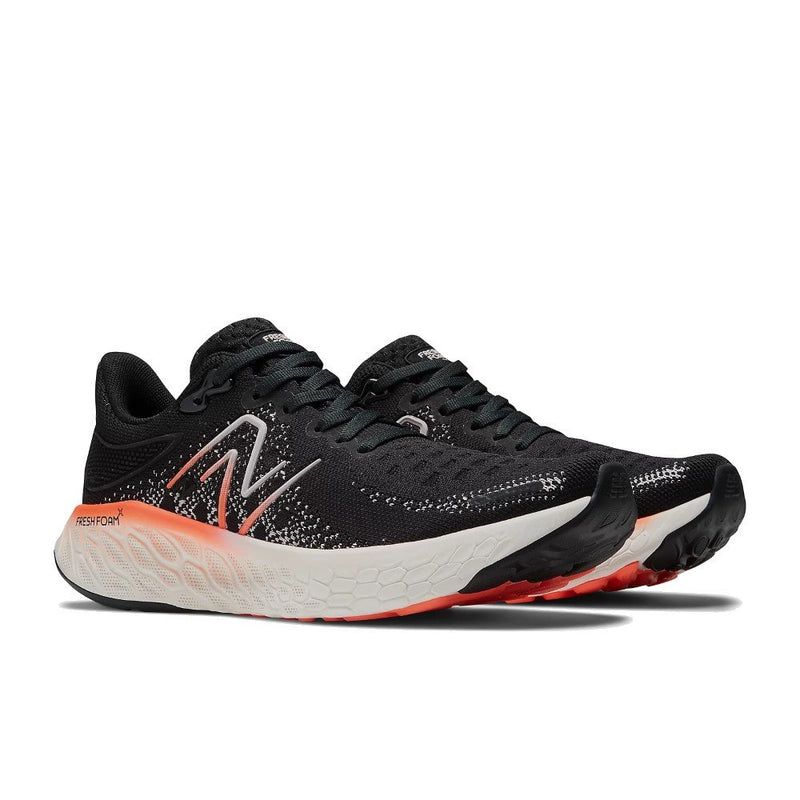New Balance Men's Fresh Foam X 1080v13 Running Shoe
More from New Balance
New Balance Men's Fresh Foam X 1080v13 Running Shoe

|
New Balance says if they only made one running shoe, that shoe would be the 1080. What makes the 1080 unique isn’t just that it’s the best running shoe they make, it’s also the most versatile. The 1080 delivers top-of-the-line performance to every kind of runner, whether you’re training for world-class competition, or catching a rush hour train. The Fresh Foam X 1080v13 represents a consistent progression of the model’s signature qualities. The smooth transitions of the pinnacle underfoot cushioning experience are fine-tuned with updated midsole mapping, which applies more foam to wider areas of the midsole and increases flexibility at the narrower points. The ultra-modern outlook is also reflected in the 1080’s upper construction. The v13 offers a breathable yet supportive fit with an engineered mesh upper, for a more streamlined overall design.
|

Details
|
Fresh Foam X midsole foam with approximately 3% bio-based content delivers New Balance's most cushioned Fresh Foam experience for incredible comfort. Bio-based content is made from renewable resources to help reduce carbon footprint. NDurance rubber outsole technology provides superior durability in high-wear areas to help get more out of the shoes Engineered air mesh upper Reflective accents designed to catch the light 6 mm drop; due to variances created during the development and manufacturing processes, all references to 6 mm drop are approximate 206 grams (7.3 oz) Fits is as expected for most people
|
How To Measure Your Shoe Size
| US Sizes | Euro Sizes | UK Sizes | Inches | CM |
|---|---|---|---|---|
| 4 | 35 | 2 | 8.1875" | 20.8 |
| 4.5 | 35 | 2.5 | 8.375" | 21.3 |
| 5 | 35-36 | 3 | 8.5" | 21.6 |
| 5.5 | 36 | 3.5 | 8.75" | 22.2 |
| 6 | 36-37 | 4 | 8.875" | 22.5 |
| 6.5 | 37 | 4.5 | 9.0625" | 23 |
| 7 | 37-38 | 5 | 9.25" | 23.5 |
| 7.5 | 38 | 5.5 | 9.375" | 23.8 |
| 8 | 38-39 | 6 | 9.5" | 24.1 |
| 8.5 | 39 | 6.5 | 9.6875" | 24.6 |
| 9 | 39-40 | 7 | 9.875" | 25.1 |
| 9.5 | 40 | 7.5 | 10" | 25.4 |
| 10 | 40-41 | 8 | 10.1875" | 25.9 |
| 10.5 | 41 | 8.5 | 10.3125" | 26.2 |
| 11 | 41-42 | 9 | 10.5" | 26.7 |
| 11.5 | 42 | 9.5 | 10.6875" | 27.1 |
| 12 | 42-43 | 10 | 10.875" | 27.6 |
Men's Shoe Size Conversions
| US Sizes | Euro Sizes | UK Sizes | Inches | CM |
|---|---|---|---|---|
| 6 | 39 | 5.5 | 9.25" | 23.5 |
| 6.5 | 39 | 6 | 9.5" | 24.1 |
| 7 | 40 | 6.5 | 9.625" | 24.4 |
| 7.5 | 40-41 | 7 | 9.75" | 24.8 |
| 8 | 41 | 7.5 | 9.9375" | 25.4 |
| 8.5 | 41-42 | 8 | 10.125" | 25.7 |
| 9 | 42 | 8.5 | 10.25" | 26 |
| 9.5 | 42-43 | 9 | 10.4375" | 26.7 |
| 10 | 43 | 9.5 | 10.5625" | 27 |
| 10.5 | 43-44 | 10 | 10.75" | 27.3 |
| 11 | 44 | 10.5 | 10.9375" | 27.9 |
| 11.5 | 44-45 | 11 | 11.125" | 28.3 |
| 12 | 45 | 11.5 | 11.25" | 28.6 |
| 13 | 46 | 12.5 | 11.5625" | 29.4 |
| 14 | 47 | 13.5 | 11.875" | 30.2 |
| 15 | 48 | 14.5 | 12.1875" | 31 |
| 16 | 49 | 15.5 | 12.5" | 31.8 |
| US Sizes | Euro Sizes | UK Sizes | Inches | CM |
|---|---|---|---|---|
| 3.5 | 35 | 2.5 | 8.625" | 21.9 |
| 4 | 36 | 3 | 8.75" | 22.2 |
| 4.5 | 36 | 3.5 | 9" | 22.9 |
| 5 | 37 | 4 | 9.125" | 23.2 |
| 5.5 | 37 | 4.5 | 9.25" | 23.5 |
| 6 | 38 | 5 | 9.5" | 24.1 |
| 6.5 | 38 | 5.5 | 9.625" | 24.4 |
| 7 | 39 | 6 | 9.75" | 24.8 |
| US Sizes | Euro Sizes | UK Sizes | Inches | CM |
|---|---|---|---|---|
| 10.5 | 27 | 9.5 | 6.625" | 16.8 |
| 11 | 28 | 10 | 6.75" | 17.1 |
| 11.5 | 29 | 10.5 | 7" | 17.8 |
| 12 | 30 | 11 | 7.125" | 18.1 |
| 12.5 | 30 | 11.5 | 7.25" | 18.4 |
| 13 | 31 | 12 | 7.5" | 19.1 |
| 13.5 | 31 | 12.5 | 7.625" | 19.4 |
| 1 | 32 | 13 | 7.75" | 19.7 |
| 1.5 | 33 | 14 | 8" | 20.3 |
| 2 | 33 | 1 | 8.125" | 20.6 |
| 2.5 | 34 | 1.5 | 8.25" | 21 |
| 3 | 34 | 2 | 8.5" | 21.6 |
FAQ & Tips
- What if I am between shoe sizes? We recommend you should size up, especially in active & sports shoes. This includes running shoes and hiking boots.
- Does 0.5 size make a difference in shoes? Yes, it certainly does! Wearing shoes that are too small can cause pain and injuries. Blisters, lose of toenails and bunions can all result from wearing shoes that are even 0.5 size too small. These are common ailments of beginner runners.
- Is one foot bigger than the other? It is common for people to have one foot that is slightly bigger than the other. Our tip is that you should buy shoes that fit the larger foot (buy pairs of shoes in the larger size of the two).
- Should shoes be tight or lose? Unfortunately, this is not a simple question. Shoes should not be too tight or too lose. You should be able to put a thumbs width at the end of your toe box, between your big toe and the pointy end of the shoe. You should also be able to snuggly fit your index finger between your heel and the back of the shoe. If you have not much (or not enough!) space in either of these areas, try a different size shoe.
- When should I try on shoes? A great tip for runners is to try on running shoes at the end of a work day. As you run, just like when you are on your feet for work, your feet swell. You will want to try on running shoes when your feet are at their largest. This allows them to still fit comfortably after a long distance run.
- What size shoe should I buy? This shoe chart is not a guarantee your shoes will fit. If you are in the area of Memphis, Tennessee, run on in to one of our running specialty & gear stores and our experienced fit experts will help you out!
Image below: A Brannock device is one tool run specialists use to measure shoe size. It can measure not only foot length, but also foot width.






































































